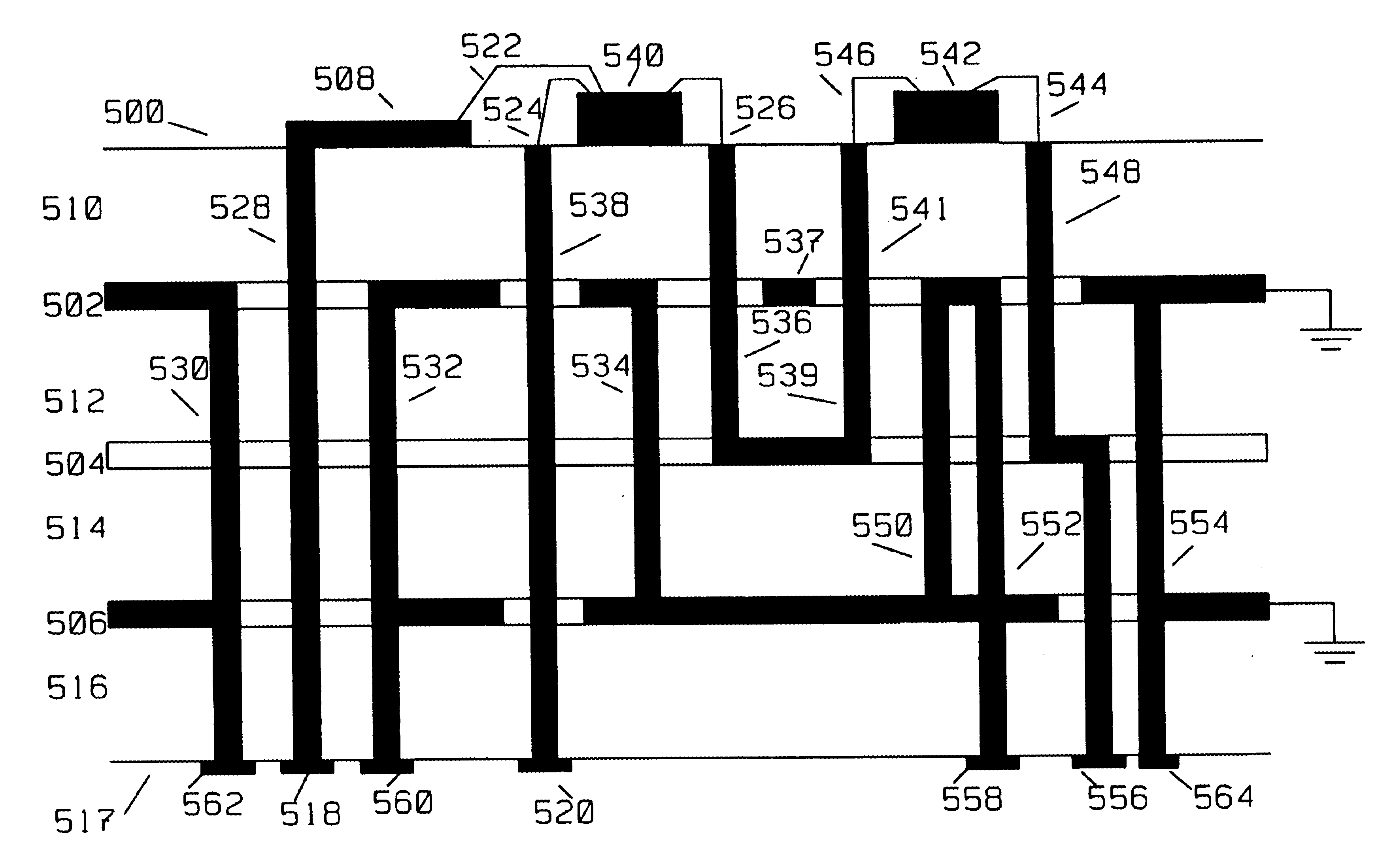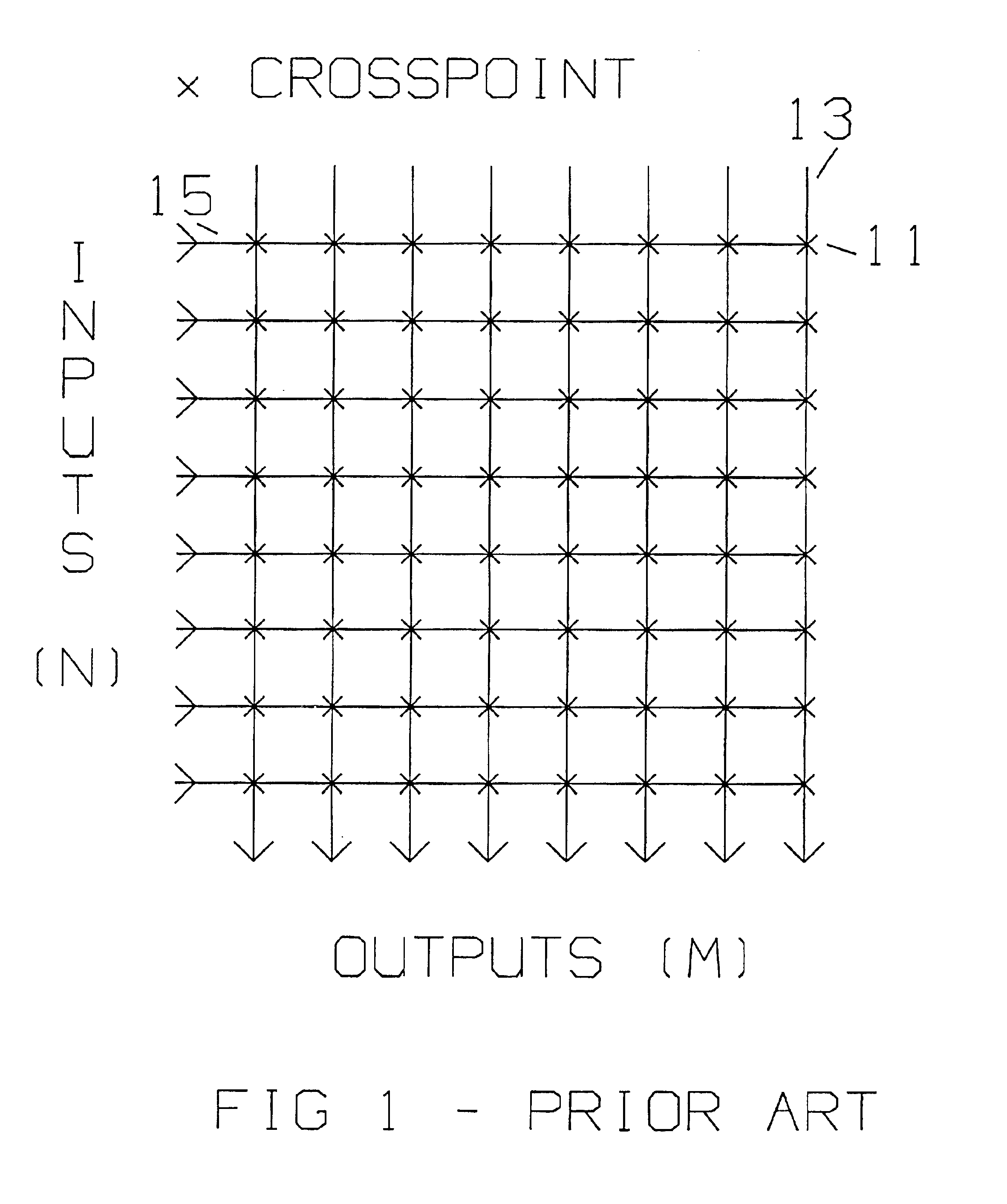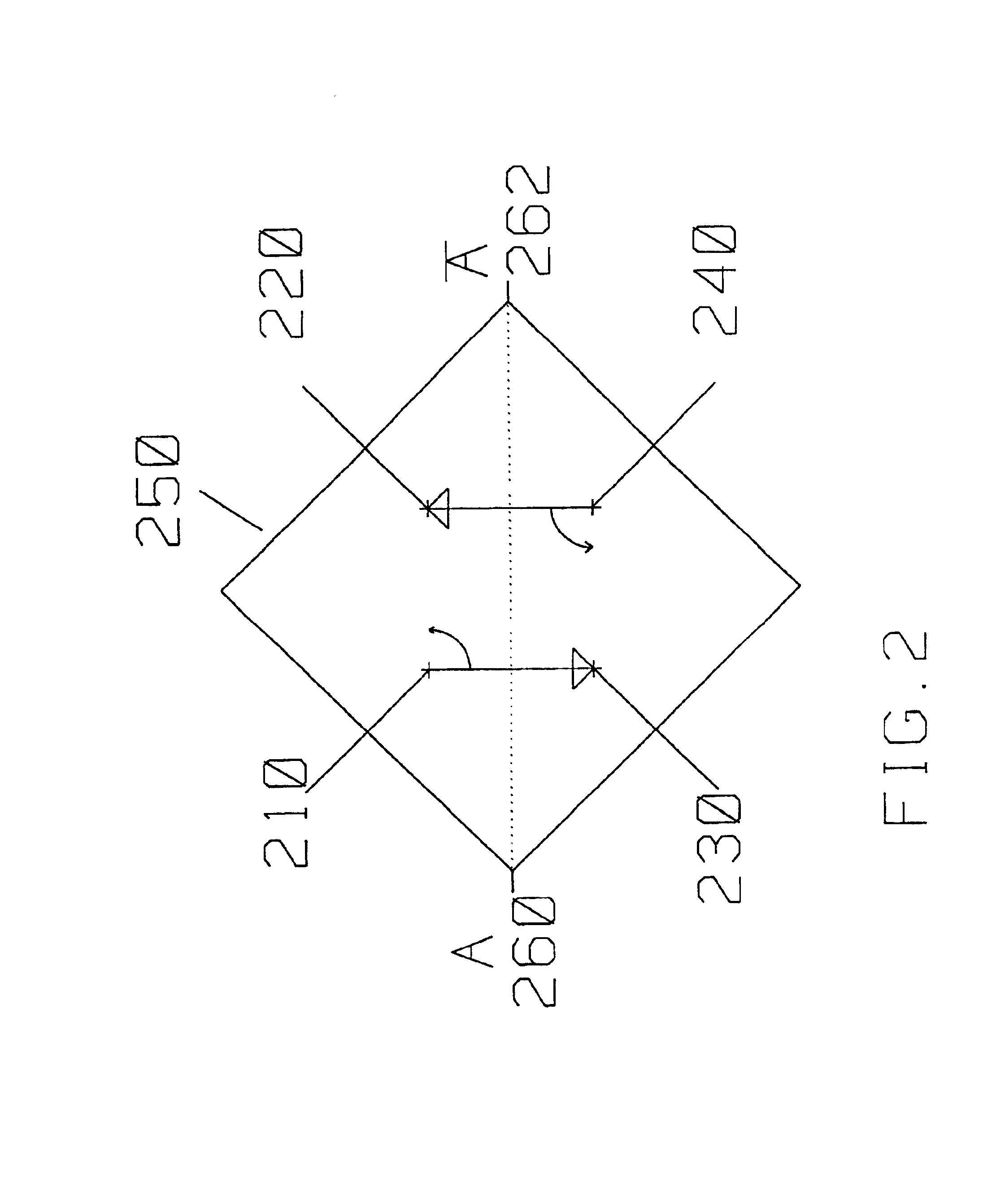Wide band cross point switch using MEMS technology
a cross-point switch and wide-band technology, applied in waveguide devices, instruments, contacts, etc., can solve the problems of becoming more difficult to provide one single, massive stage to interconnect all inputs and outputs, and achieve the effect of improving signal separation
- Summary
- Abstract
- Description
- Claims
- Application Information
AI Technical Summary
Benefits of technology
Problems solved by technology
Method used
Image
Examples
Embodiment Construction
1. Introduction
This invention introduces the notion of using MEMS structures on a common substrate to form, for example, an 8 by 8 switching matrix, as well as other switching matrix configurations. Special provisions are made to isolate the input from the output, thus insuring minimal signal leakage for OFF conditions across a MEMS structure.
FIG. 1 shows a an 8 by 8 matrix of crosspoints of the prior art. Any of 8 inputs can be connected with any of 8 outputs. For example, input 15 is connected to output 13 using cross point switch 11. Because there are 64 cross point switches, this is a full availability, non-blocking switching matrix. Each of the 64 switches is closed or opened in accordance with a control signal applied to each switch. The control signals are not shown.
FIG. 2 shows the diagram of a typical MEMS structure 250, a building block of the present invention. In FIG. 2, a signal applied to terminal 210 can be switched to either terminal 230 or 220 upon a command applied...
PUM
 Login to View More
Login to View More Abstract
Description
Claims
Application Information
 Login to View More
Login to View More - R&D
- Intellectual Property
- Life Sciences
- Materials
- Tech Scout
- Unparalleled Data Quality
- Higher Quality Content
- 60% Fewer Hallucinations
Browse by: Latest US Patents, China's latest patents, Technical Efficacy Thesaurus, Application Domain, Technology Topic, Popular Technical Reports.
© 2025 PatSnap. All rights reserved.Legal|Privacy policy|Modern Slavery Act Transparency Statement|Sitemap|About US| Contact US: help@patsnap.com



